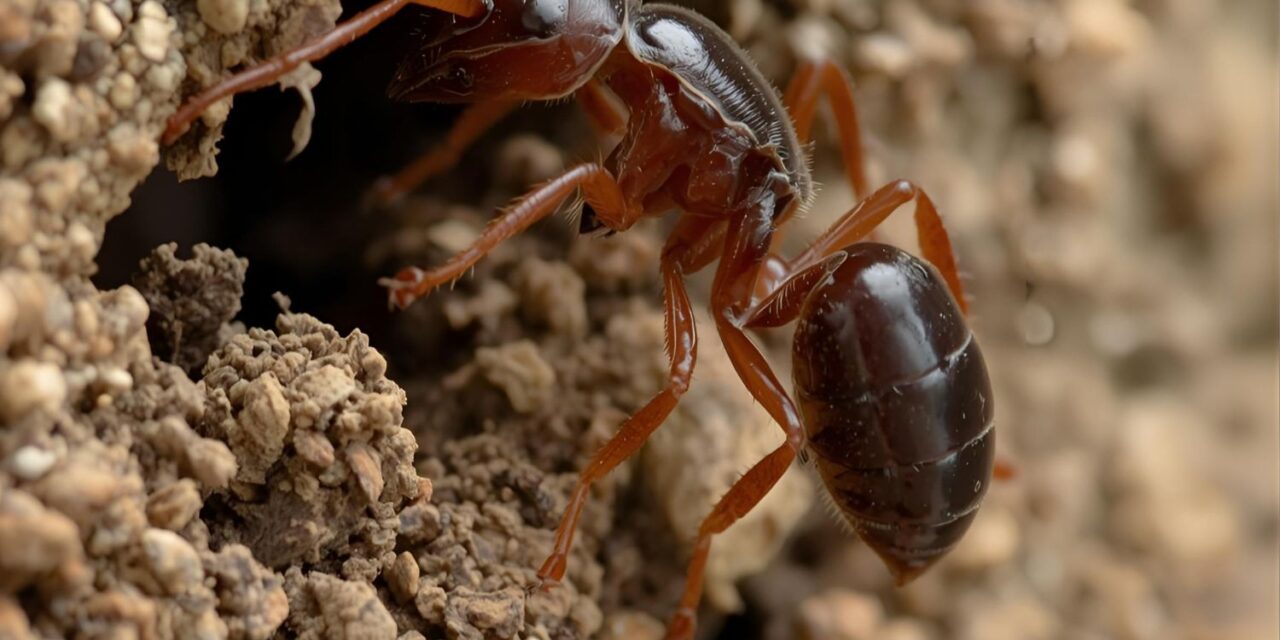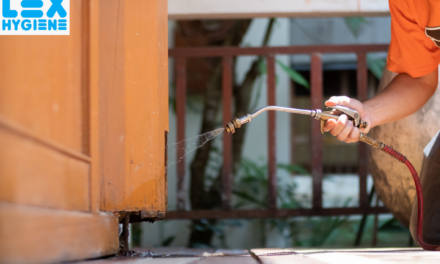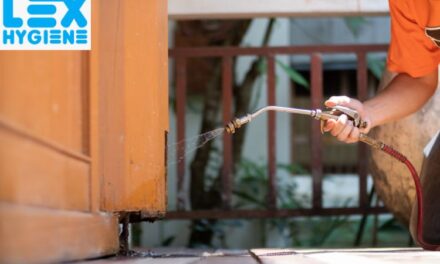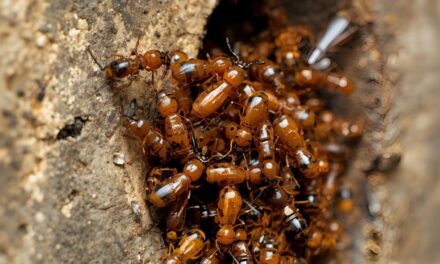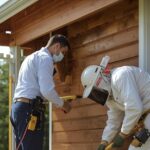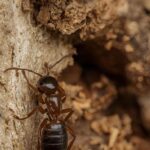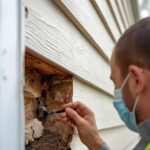Safeguarding Your Sanctuary: The Ultimate Guide to Termite Prevention for Homes
Estimated reading time: 12 minutes
Key Takeaways
- Termites are often called “*silent destroyers*,” causing significant and costly damage to homes without obvious signs.
- **Proactive prevention** is far more cost-effective and less disruptive than dealing with an established infestation.
- **Moisture control** is critical; fix leaks, ensure proper drainage, and improve ventilation to deter termites.
- **Eliminate wood-to-soil contact** and maintain a clear gap to force termites to build visible mud tubes.
- Regular **DIY inspections** and professional **annual checks** are essential for early detection.
- **Natural methods** like beneficial nematodes, orange oil, neem oil, boric acid, and diatomaceous earth can act as deterrents or treat small, localized issues.
- For established or widespread infestations, **professional pest control** is almost always necessary for effective, long-term solutions.
Table of Contents
- Safeguarding Your Sanctuary: The Ultimate Guide to Termite Prevention for Homes
- Key Takeaways
- The Critical Importance of Termite Prevention
- Comprehensive Termite Prevention for Homes: Proactive Strategies
- Natural Ways to Stop Termites: Eco-Friendly Solutions
- When to Call the Professionals for Termite Prevention
- Conclusion
- Frequently Asked Questions
Termites are often called “silent destroyers” for a good reason. These tiny creatures can chew through the wooden parts of your house without you even knowing. They can cause big problems and a lot of damage before anyone spots them. Imagine your home, a place that feels safe and strong, slowly being eaten away from the inside out.
The cost to fix termite damage and get rid of these pests can be very high. On average, homeowners might spend anywhere from thousands to tens of thousands of dollars to repair the harm termites cause and treat the problem. This can be a huge unplanned expense for any family.
That’s why being proactive about **termite prevention** is so important. It’s like putting on a helmet before you ride a bike – it protects you before something bad happens. Taking steps to stop termites before they start is a smart investment. It helps protect your home’s strong structure, keeps its value high, and makes sure your family stays safe. Expert advice always points out that stopping termites before they start is much cheaper and causes less trouble than trying to fix a big problem later.
This article is a comprehensive guide all about **how to prevent termites** and make sure you have effective **termite prevention for homes**. We’ll cover many different ways to keep these pests away. We will look at both smart, comprehensive plans you can put in place and effective **natural ways to stop termites**. Our goal is to give you all the tools you need to protect your home from these hidden invaders.
The Critical Importance of **Termite Prevention**
Let’s talk more about why **termite prevention** isn’t just a good idea, but a truly critical task for every homeowner. As we mentioned, termites are often called “silent destroyers” because they work hidden away, munching on wood, flooring, and even wallpaper. They do this without making much noise or showing clear signs until the damage is already severe.
The severe consequences of a termite infestation can be frightening. These tiny wood-eating insects can cause significant structural damage to your house. This means they can make the very bones of your home – the wooden beams, supports, and foundations – weak and unsafe. When the structural integrity of your home is compromised, it can severely diminish its value. No one wants to buy a house that’s been damaged by pests. More importantly, it can even affect the safety of those living inside. Imagine floors that sag or walls that crumble because of hidden tunnels.
Dealing with an established infestation (when termites have already set up a large colony) is a huge headache. It means expensive treatments, noisy repairs, and a lot of disruption to your daily life. That’s why taking proactive measures to stop termites before they get comfortable in your home is always far more cost-effective and much less disruptive than dealing with the aftermath of a full-blown attack. Think of it as guarding your property against a known enemy.
Comprehensive **Termite Prevention for Homes**: Proactive Strategies
Making sure your home is safe from termites requires a smart, multi-faceted approach. This means doing many different things to make your home less attractive to these wood-eating pests. You’ll focus on getting rid of conditions that termites love and creating strong barriers they can’t easily cross. This section will guide you through effective, proactive **termite prevention for homes** to keep your sanctuary safe.
2.1. Moisture Control
Termites, especially the common subterranean termites, absolutely need moisture to live and grow. They are always on the lookout for damp places. Controlling moisture in and around your home is one of the most important steps in **how to prevent termites**.
- Fix Leaks Promptly: Go on a leak hunt! Check all your pipes, faucets, and air conditioning units for any drips. Don’t forget to inspect your roof for leaks too. Even tiny, constant drips might not seem like a big deal, but they create perfect damp conditions that termites just love. Fixing these small leaks quickly can save you from a major termite problem down the road. This also prevents water damage, which is another costly issue for homeowners.
- Proper Drainage Around Your Foundation: Think about where rainwater goes around your house.
- Clean Gutters and Downspouts: Make sure your gutters are clean and clear of leaves and debris. Also, check that your downspouts (the pipes that carry water from the gutters) extend at least 2 to 3 feet away from your home’s foundation. This directs water far away, so it doesn’t just soak into the soil right next to your house.
- Grade the Soil: Look at the ground around your home. It should slope *away* from the foundation, not towards it. This simple grading helps rainwater run off easily, preventing it from pooling near your house. Standing water next to your home is like a welcome mat for hungry termites looking for a damp new home.
- Improve Ventilation: Airflow is key to reducing moisture.
- Crawl Spaces, Attics, and Basements: These areas are often dark and can get very humid. Improving airflow here is crucial. Consider installing exhaust fans or making sure existing ventilation systems are working correctly. Good ventilation reduces humidity levels, which makes these spaces much less appealing to active termites.
- Reduce Humidity: Lowering the humidity not only helps with **termite prevention** but also makes your home more comfortable and can prevent mold growth.
- Warning Sign: Always remember that finding standing water or consistently damp soil close to your home’s foundation is a major red flag. This signals a perfect environment for termite activity and should prompt you to investigate and fix the moisture source immediately.
2.2. Eliminate Wood-to-Soil Contact
Direct contact between wood and soil is like a superhighway for termites to get into your house. This is a primary entry point, making it a critical area to address when thinking about **how to prevent termites**.
- Maintain a Gap: You need to create a clear space between the soil and any wooden parts of your house. Aim for at least a 6-inch gap, but ideally, you want a 12-inch gap. This includes your home’s siding, any wooden porch steps, and even window frames that might be too close to the ground. This separation forces termites to come out into the open.
- Benefit of the Gap: When termites can’t tunnel directly from the soil into your home, they have to build visible “mud tubes.” These earthen tunnels are like tiny highways they build to travel from the soil to the wood above. Seeing these mud tubes makes their presence much easier to detect during your regular home inspections. This early detection is a huge win for **termite prevention for homes**.
- Use Treated Wood: If you have any wooden structures that *must* touch the soil, such as fence posts, deck supports, or garden bed borders, it’s essential to use pressure-treated wood. This special wood is soaked with insecticides or preservatives that actively deter subterranean termites and also resist rot. It acts as a barrier, making it much harder for these wood-eating pests to establish themselves.
2.3. Yard and Garden Maintenance
A clean and tidy yard does more than just look nice; it significantly reduces places where termites can live and find food. Keeping your garden well-maintained is a key part of **how to prevent termites** from making your property their home.
- Clear Cellulose Debris: Termites love to eat anything made of cellulose, which is found in wood and plants. Make sure to remove any woodpiles, old tree stumps, leftover tree roots, and even construction lumber scraps from around your house. Don’t leave old cardboard boxes or newspapers sitting around outside either.
- Firewood Storage: If you burn firewood, store it properly. Keep it elevated off the ground (on a metal rack, for instance) and at least 20 feet away from your home’s foundation. This ensures that any termites living in the firewood don’t have an easy path into your house.
- Mulch Management: Mulch is great for plants, but it can also be attractive to termites because it helps keep the soil moist.
- Keep Distance: If you use wood-based mulch (like bark or wood chips), keep it at least 15 to 30 centimeters (which is about 6 to 12 inches) away from your home’s foundation. This creates a buffer zone where termites are less likely to gather right next to your house.
- Alternative Mulches: For areas directly against your house, consider using alternative mulches like rubber mulch, gravel, or even rocks. These options don’t provide a food source for termites and don’t retain as much moisture.
- Vegetation Trimming: Overgrown plants can also create problems.
- Trim Shrubs and Trees: Trim any shrubs, bushes, or tree branches so they do not touch the side of your house. This is important for a few reasons: it improves air circulation around your home, which helps reduce damp, shaded areas that termites prefer. It also makes it much easier for you to inspect your foundation for any signs of mud tubes or other termite activity. Without plants in the way, you can easily spot potential trouble. This vigilance is crucial for effective **termite prevention**.
2.4. Seal Entry Points
Preventing termites from finding their way into your home in the first place is a critical step in effective **termite prevention for homes**. Even the smallest crack can be an invitation for these tiny pests.
- Seal Cracks and Gaps: Take the time to inspect your home’s foundation very carefully. Look for any cracks, no matter how small. Also, check around utility entry points – these are the places where pipes, wires, and cables enter your house. Don’t forget expansion joints, which are common in concrete. Fill any cracks or gaps you find with a high-quality caulk, cement, or mortar. This creates a physical barrier that subterranean termites cannot easily pass.
- Repair Damaged Areas: Termites are incredibly resourceful and can squeeze through tiny openings.
- Screens and Weather Stripping: Repair or replace any damaged screens on windows and doors. Also, make sure your weather stripping is intact and fits snugly.
- Loose Mortar: Check the mortar around your windows and doors. If you find any loose or crumbling mortar, repair it. These small openings can be easy access points for termites looking for a way inside your home. Taking these steps is essential for a robust **how to prevent termites** strategy.
2.5. Regular Inspections
Even with the best preventive measures, vigilance is key to spotting any termite activity early. Regular inspections are vital for effective **how to prevent termites**. Catching a problem when it’s small can save you a lot of money and stress.
- DIY Checks: As a homeowner, you should regularly check your property for specific signs of termites. Make this a routine habit, perhaps once a season.
- Foundation: Carefully inspect your foundation, both inside your basement or crawl space and outside. Look for any tell-tale signs.
- Crawl Spaces and Basements: These dark, often damp areas are prime spots for termites. Shine a flashlight into every corner.
- Wood-to-Soil Contact Areas: Pay extra attention to places where wood meets the soil, even if it’s treated wood.
- What to Look For:
- Mud Tubes: These are pencil-sized earthen tunnels that termites build on foundations, walls, or pipes. They use them to travel safely from their nests in the soil to their food source (your wood) while staying hidden from light and dry air.
- Discarded Wings: After a termite swarm (when flying termites leave the colony to start new ones), you might find piles of small, translucent wings. These are often found near windows, light sources, or even caught in spiderwebs. This is a strong indicator of nearby termite activity.
- Damaged Wood: Tap on any wooden structures. If the wood sounds hollow when tapped, or if it crumbles easily when poked, it could be a sign of termite damage. Termites eat the inside of the wood, leaving a thin outer layer.
- Frass: This refers to termite droppings. For drywood termites, frass looks like tiny piles of sawdust or small, hard pellets. Seeing these tiny pellets often means drywood termites are nearby.
- Professional Inspections: While your DIY checks are important, they are not a substitute for expert eyes. Most experts strongly recommend annual professional termite prevention inspections.
- The Value of Professionals: Licensed pest control technicians have special training, advanced tools (like moisture meters or thermal cameras), and years of experience. They can spot subtle signs of termite activity that most homeowners would miss. They can also detect hidden infestations that are deep inside walls or under floors. A professional inspection gives you crucial peace of mind, knowing that your home is thoroughly checked by an expert. They are trained to identify the specific type of termite and understand the full extent of any potential problem, providing an essential layer of protection for your property.
**Natural Ways to Stop Termites**: Eco-Friendly Solutions
For homeowners who prefer to avoid strong chemicals, there are several **natural ways to stop termites**. These eco-friendly solutions can work as deterrents or help with very small, localized termite problems. It’s very important to understand their limits, though. For a big, established termite infestation, professional help is usually the best and most necessary solution.
3.1. Beneficial Nematodes
- What They Are: Beneficial nematodes are tiny, microscopic, parasitic roundworms. Don’t worry, they are natural predators of many soil-dwelling pests, including subterranean termites. They are good guys in your garden!
- Species: Specific types like *Steinernema carpocapsae* and *Heterorhabditis bacteriophora* are known for attacking termites.
- How They Work: These tiny worms invade a termite’s body, then release special bacteria that kill the termite within 24 to 48 hours. They can be a natural force in **how to prevent termites** in your soil.
- Application: You usually mix them with water and then spray them onto the soil around your foundation or onto any affected wood.
- Safety: The best part is that beneficial nematodes are completely safe for humans, pets, and plants. They won’t harm your family or garden.
- Limitations: They need certain conditions to work well, like specific soil moisture and temperature. They also need to be applied correctly to be effective.
3.2. Orange Oil (d-Limonene)
- Source: This oil is extracted from the rinds of citrus fruits, like oranges.
- Target: Orange oil is particularly effective against drywood termites, which live inside wood without needing contact with the soil.
- How It Works: When drywood termites come into contact with or ingest orange oil, it dissolves their waxy outer layer (exoskeleton). This leads to dehydration, and ultimately, death.
- Application: It’s usually injected directly into the termite galleries (the tunnels they make) within the wood.
- Limitations: While it can kill termites on contact in a specific spot, orange oil doesn’t spread very far into the wood or offer lasting protection. This means it’s less effective for large, widespread infestations or for dealing with subterranean termites, which live in the soil. It’s more of a spot treatment for small, visible drywood termite problems, not a broad **termite prevention** solution for your whole home.
3.3. Neem Oil
- Source: Neem oil comes from the seeds of the neem tree, a plant native to India.
- How It Works: Neem oil acts as a natural insect growth regulator and an “anti-feedant.” When termites eat or touch neem oil, it messes up their molting process (how insects shed their skin to grow). It also stops them from wanting to eat, which can lead to starvation and death. It disrupts their natural life cycle, which helps in **how to prevent termites** from thriving.
- Application: You can mix neem oil with water and spray it onto the soil around your home’s foundation or directly onto any visible termite activity.
- Limitations: Neem oil works more slowly than some chemical treatments. You also need to apply it consistently and correctly for it to be effective in deterring or eliminating termites.
3.4. Boric Acid
- Nature: Boric acid is a naturally occurring compound, often found in minerals.
- How It Works: It acts as a stomach poison and a desiccant (something that dries things out) for termites. When termites eat or absorb boric acid, it harms their digestive system and dehydrates them.
- Application: Boric acid is often used in special bait stations that termites eat. It can also be applied as a dust to wood where termites are active.
- Spread: A great thing about boric acid is that termites can carry it back to their colony. Through a process called trophallaxis (when termites share food with each other), the boric acid can spread to other members of the colony, potentially wiping out the entire group. This makes it a powerful option among **natural ways to stop termites**.
- Safety: It’s generally safe for indoor use if you apply it correctly. However, you must be careful to prevent pets or children from getting into it or eating it. Always read and follow the product instructions carefully.
3.5. Diatomaceous Earth (DE)
- Nature: Diatomaceous earth is a fine, white powder made from the fossilized remains of tiny aquatic organisms called diatoms.
- How It Works: When termites crawl over DE, the microscopic sharp edges of the diatom particles scratch and abrade their waxy outer layer (exoskeleton). This causes the termites to lose moisture, dehydrate, and eventually die. It’s a physical way to get rid of pests, part of a good **termite prevention** plan.
- Safety: Food-grade DE is non-toxic to humans and pets, meaning it won’t poison them. However, it can be irritating if inhaled, so it’s best to wear a mask when applying it.
- Application: DE is most effective when applied as a fine dust in dry areas where termites are present. You can puff it into cracks, crevices, or around foundations.
- Limitations: Its effectiveness is greatly reduced if it gets wet, as the particles lose their abrasive power. It needs to remain dry to work its magic.
3.6. Important Note on Natural Methods
It’s crucial to understand this: While these **natural ways to stop termites** offer eco-friendly choices, their effectiveness is often best suited for specific situations. They are great for:
- Prevention: Deterring new colonies from moving in.
- Deterrents: Making your property less appealing to termites.
- Localized, Small Issues: Especially for drywood termites, which infest specific pieces of wood.
Strong Warning: For established, widespread, or subterranean termite infestations, which are typically much harder to get rid of, professional pest control services are almost always necessary. Professionals use stronger, more systemic treatments that can reach the entire colony. Relying *only* on natural methods for a serious infestation can lead to continued, costly damage to your home. It’s important not to underestimate the destructive power of a large termite colony when considering **how to prevent termites** from causing irreversible harm. The Termite Control Process Explained: Your Comprehensive Guide to Protecting Your Home with Eco-Friendly Solutions
When to Call the Professionals for **Termite Prevention**
As homeowners, you can do a lot to significantly reduce your risk of termites through diligent **termite prevention** efforts. However, there are certain signs that clearly say it’s time to call in the experts right away. Ignoring these signals can lead to severe and expensive damage.
Signs for Professional Intervention:
If you see any of the following, don’t delay – pick up the phone and contact a licensed pest control professional:
- Discovery of Extensive Mud Tubes: Finding a few small mud tubes during your DIY inspection might mean a new problem, but if you see many mud tubes, or long, thick ones, covering foundations, walls, or even utility pipes, it strongly suggests a large, active subterranean termite colony is at work. This is a major warning sign.
- Finding Large Numbers of Discarded Wings: While a few wings might be from a past swarm, finding large piles of discarded wings, especially near windows, light sources, or vents, indicates that a termite swarm has recently happened (or is happening). This means there’s a mature colony nearby that’s sending out new reproductive termites, which is a serious threat to your home.
- Visible Termite Damage: This is a clear indicator that the problem is already advanced. Look for:
- Sagging Floors or Ceilings: This can mean that the wooden supports underneath are severely damaged.
- Crumbling Wood: If you poke wood and it easily crumbles or feels soft, it’s likely been eaten away from the inside.
- Tunnels in Wood: Sometimes you might see visible tunnels or galleries in exposed wood, especially if it’s been painted over and the paint starts to bubble or flake.
- Seeing Actual Live Termites: If you see worker termites (small, pale, ant-like insects) or especially swarmer termites (winged insects that often appear in spring or after rain), it’s a definite sign of an active infestation. Seeing them means they are there, and they are busy causing damage.
Professional Advantages:
When you call a professional, you’re not just getting someone to spray chemicals. You’re getting expert knowledge and specialized tools for effective **termite prevention for homes**.
- Advanced Diagnostic Tools: Professionals use special tools like moisture meters, thermal imaging cameras, and even acoustic detection devices to accurately assess the extent of an infestation. These tools can find hidden termites that you would never see with the naked eye.
- Effective Termiticides and Bait Systems: Licensed pest control companies have access to highly effective termiticides (insecticides specifically for termites) and advanced bait systems that are not available to the general public. These treatments are designed to not only kill existing termites but also to provide long-lasting protection.
- Expertise to Identify Species and Extent: There are different types of termites (subterranean, drywood, dampwood), and each requires a slightly different treatment approach. Professionals have the expertise to correctly identify the specific termite species and determine the full extent of the infestation. This ensures the right treatment is used.
- Targeted Solutions and Long-Term Protection: Experts don’t just guess; they provide targeted solutions based on the specific needs of your home and the type of termite. They can create chemical barriers around your home, install monitoring systems, and set up long-term protection plans that DIY methods often cannot match. This focused approach is key to truly effective **how to prevent termites** from returning.
- Peace of Mind and Structural Safeguarding: Ultimately, professional intervention offers crucial peace of mind. Knowing that your home’s structural integrity is safeguarded by experts protects your most valuable asset. They offer comprehensive solutions that fulfill the goal of long-term **termite prevention for homes**, ensuring your sanctuary remains strong and safe.
Conclusion
Protecting your home from the destructive power of termites is a vital part of being a homeowner. This guide has shown you that effective **termite prevention** is not a single action, but a comprehensive effort. It combines smart, proactive measures you can take yourself with the watchful eye of regular professional inspections.
By diligently following the strategies outlined in this post – managing moisture, eliminating wood-to-soil contact, maintaining your yard, sealing entry points, and performing regular DIY checks – you significantly reduce your home’s vulnerability. These steps are essential for **how to prevent termites** from ever getting a foothold.
Remember that a combination of these homeowner measures and regular professional vigilance is the most effective approach for robust **termite prevention for homes**. It creates a powerful shield for your property.
We encourage you to implement these detailed strategies today. If you suspect an infestation, or simply want the reassurance of professional eyes, don’t hesitate. Contact a local licensed pest control professional for thorough inspections and to discuss potential treatment plans. Your home is your sanctuary – protect it from silent destroyers.
Frequently Asked Questions
Q1: How often should I inspect my home for termites?
For DIY checks, it’s recommended to inspect your home at least once per season, or quarterly, paying close attention to moisture-prone areas and wood-to-soil contact points. For professional inspections, most experts recommend annual visits by a licensed pest control technician to catch hidden problems early.
Q2: Are natural termite prevention methods effective against all types of infestations?
Natural methods like beneficial nematodes, orange oil, neem oil, boric acid, and diatomaceous earth can be effective as deterrents, for preventing new colonies, or for localized, small infestations (especially drywood termites). However, for widespread or established subterranean termite infestations, professional chemical treatments are generally necessary due to the difficulty of reaching the entire colony with natural solutions.
Q3: What are the most common signs of a termite infestation?
Key signs include mud tubes (pencil-sized tunnels on foundations or walls), discarded wings (especially near windows after a swarm), hollow-sounding or crumbling wood when tapped, and frass (tiny sawdust-like droppings for drywood termites). Visible live termites (workers or swarmers) are a definitive sign.
Q4: Can termites return after treatment?
Yes, termites can potentially return, especially if the initial treatment was incomplete, if new termite colonies establish themselves, or if preventive measures are not maintained. This is why ongoing vigilance, regular inspections, and professional follow-up treatments (if recommended) are crucial for long-term protection.

